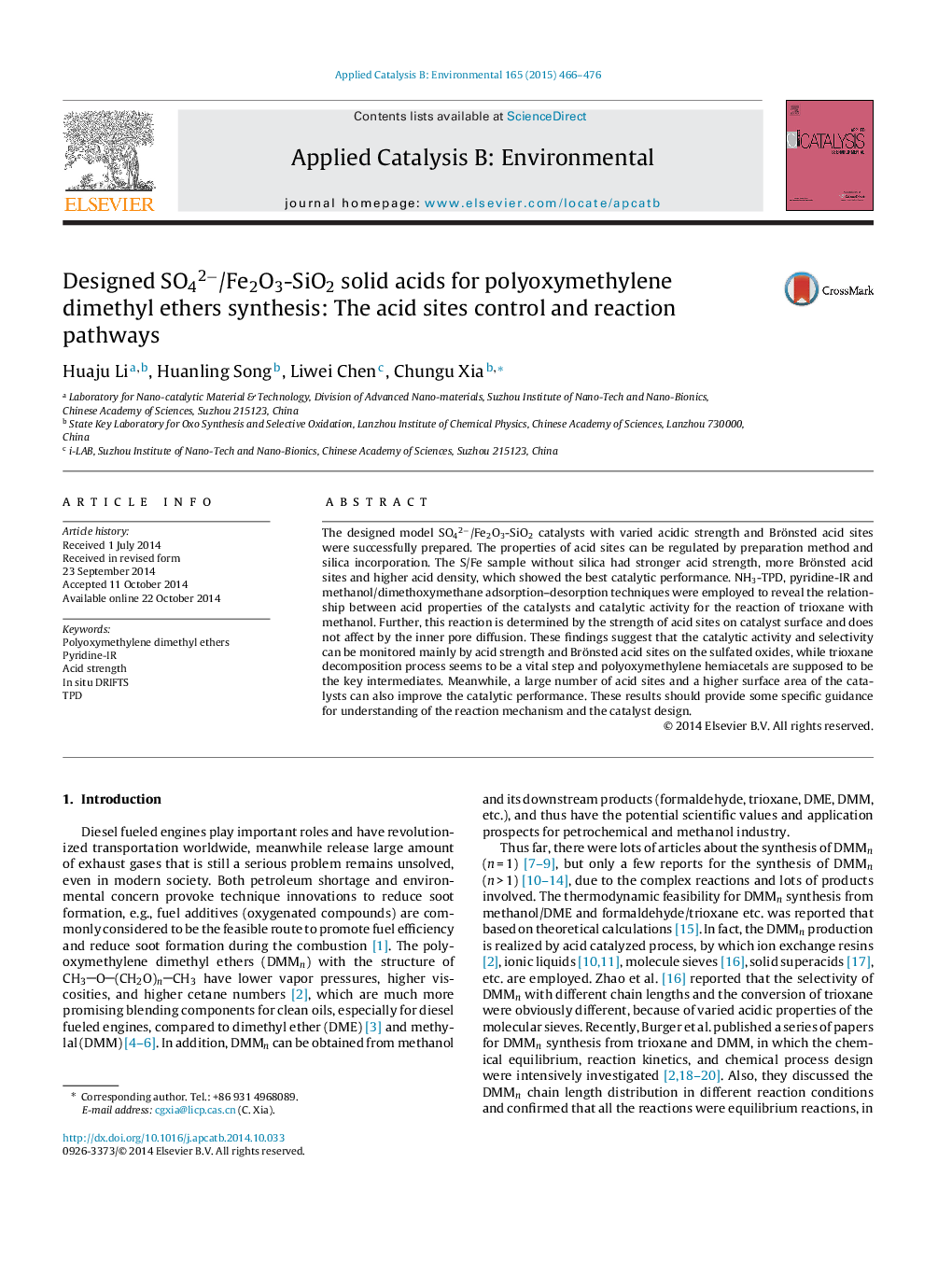| کد مقاله | کد نشریه | سال انتشار | مقاله انگلیسی | نسخه تمام متن |
|---|---|---|---|---|
| 45577 | 46416 | 2015 | 11 صفحه PDF | دانلود رایگان |

• Model SO42−/Fe2O3-SiO2 catalysts with varied types of acid sites were prepared.
• Acid strength is promoted by the interaction between sulfate ion and iron atom.
• The catalytic performance can be monitored essentially by the acid strength.
• Trioxane dissociation process is supposed to be a vital step.
The designed model SO42−/Fe2O3-SiO2 catalysts with varied acidic strength and Brönsted acid sites were successfully prepared. The properties of acid sites can be regulated by preparation method and silica incorporation. The S/Fe sample without silica had stronger acid strength, more Brönsted acid sites and higher acid density, which showed the best catalytic performance. NH3-TPD, pyridine-IR and methanol/dimethoxymethane adsorption–desorption techniques were employed to reveal the relationship between acid properties of the catalysts and catalytic activity for the reaction of trioxane with methanol. Further, this reaction is determined by the strength of acid sites on catalyst surface and does not affect by the inner pore diffusion. These findings suggest that the catalytic activity and selectivity can be monitored mainly by acid strength and Brönsted acid sites on the sulfated oxides, while trioxane decomposition process seems to be a vital step and polyoxymethylene hemiacetals are supposed to be the key intermediates. Meanwhile, a large number of acid sites and a higher surface area of the catalysts can also improve the catalytic performance. These results should provide some specific guidance for understanding of the reaction mechanism and the catalyst design.
Polyoxymethylene dimethyl ethers are promising blending components for clean oils, especially for diesel fueled engines, which can be synthesized by the reaction of methanol with trioxane on the acidic catalysts. The catalytic activity and selectivity could be regulated mainly by acid strength and Brönsted acid sites, while trioxane decomposition process seems to be a vital step and polyoxymethylene hemiacetals are supposed to be the key intermediates.Figure optionsDownload as PowerPoint slide
Journal: Applied Catalysis B: Environmental - Volume 165, April 2015, Pages 466–476